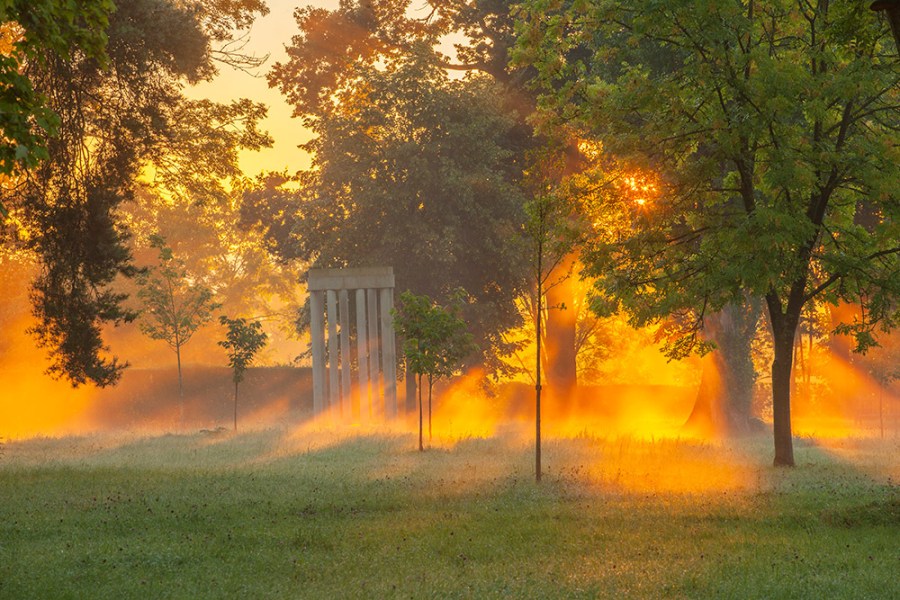Britain is blessed with a huge choice of diverse gardens to photograph. Tracy Calder speaks to three garden photographers with quite distinct approaches
Clive Nichols
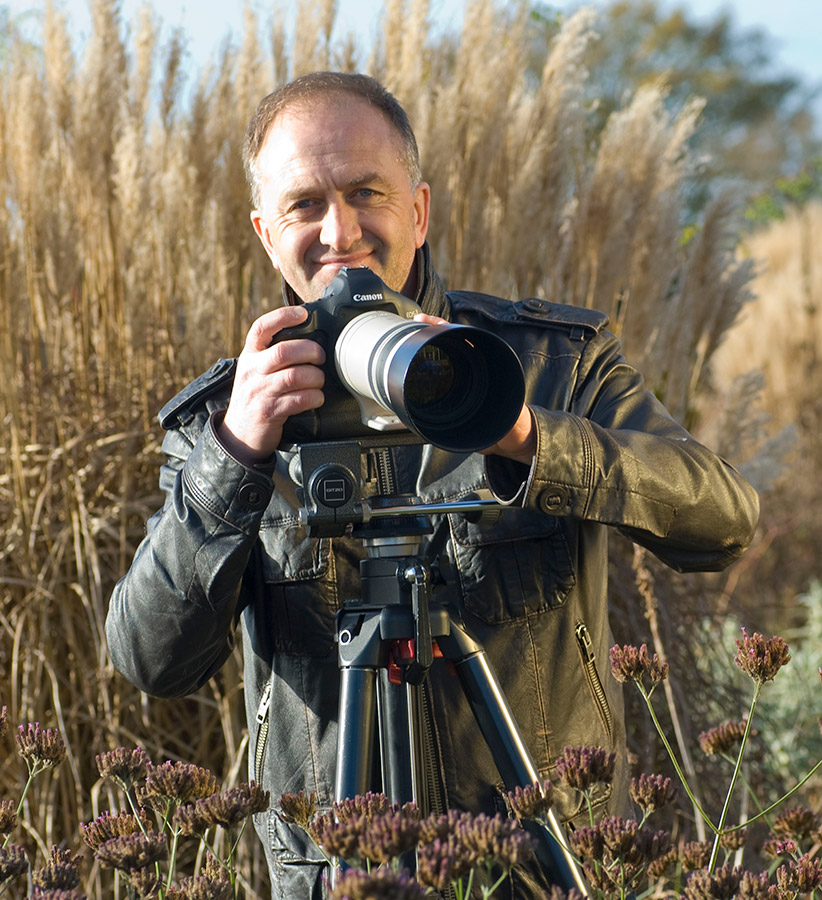
Clive is one of the UK’s best-known and widely published garden photographers, with a photo library of over 110,000 images. He also lectures for the RHS. See clivenichols.com and Instagram: @clivenichols
The National Garden Scheme/Scotland Garden Scheme is a great way to find gardens. When I started out, I used to visit a lot of the open gardens to arrange a time to come back to get better light – usually first thing in the morning or dusk. With bigger gardens owned by The National Trust, for example, access can be difficult. You can end up shooting in the middle of the day with the sun high in the sky, leading to burnt out highlights and very dark shadows. In the summer, 4 or 5am or 7-8pm is often ideal. I shoot all through the year, however: all the seasons are lovely in different ways.
Work local

Taken at Pettifers, in the village I live in – about a two-minute walk from my house. I’ve known the owner for about 20 years, so I can get there for sunrise. This was taken with a 70-20mm zoom with lovely backlight. So a great tip is to make friends with locals with a great garden and go from there.
Consider composition
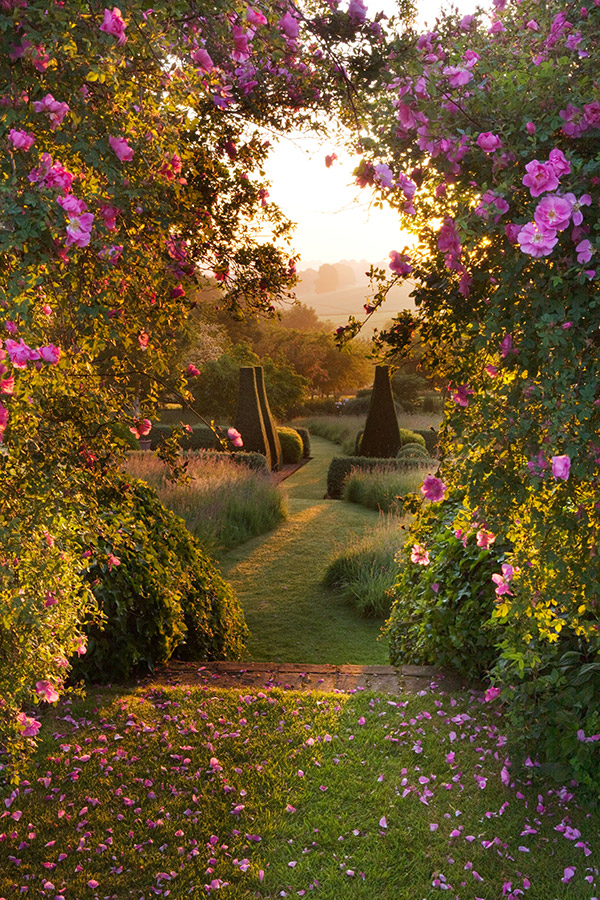
Again taken at Pettifers. The rose frames the view through and the path leads you through to the back of the image. This all helps to make the picture feel more three-dimensional, so think about a similar technique when taking photos. It was taken early in the morning, so you get the early light in the fields in the background. It’s saying ‘come down the path’ and making the most of other garden features.
Use the sun carefully
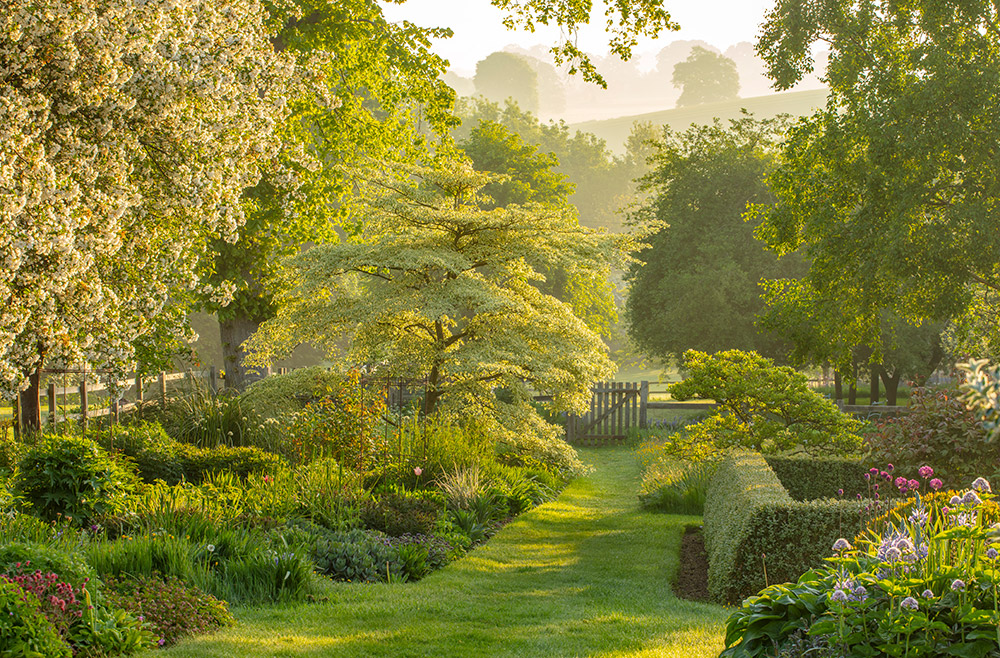
This was taken much earlier at Pettifers, in May, so you have the crabapple in full flower on the left, adding visual interest. It’s very green and you get that lovely spring lighting. Backlighting is crucial here – I nearly always shoot into the light, making sure that the sun is blocked in some ways. You don’t want direct sunlight coming into your lens.
Master backlighting
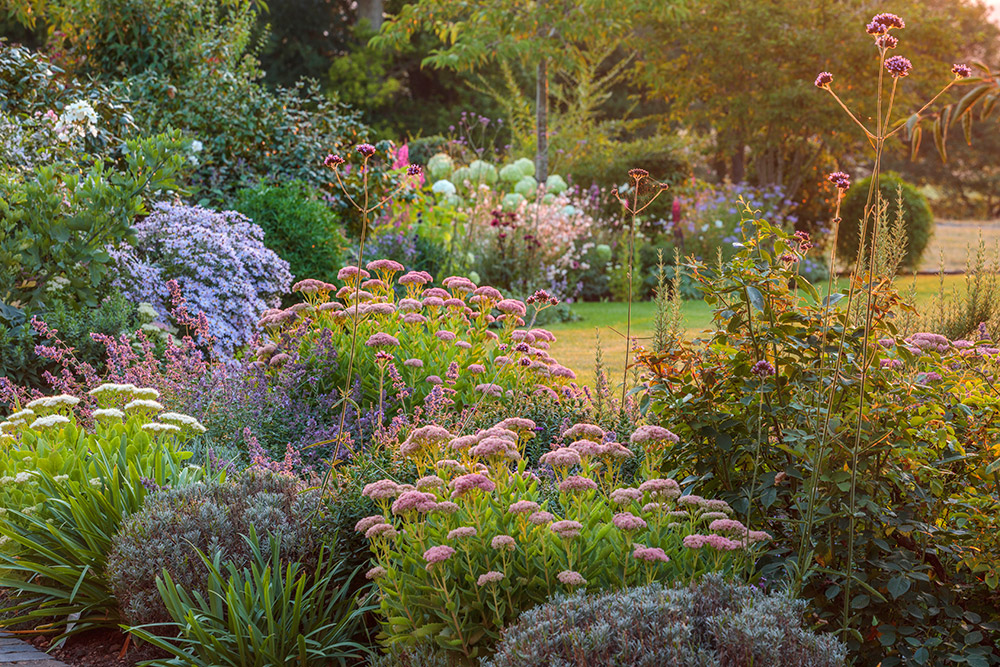
Another good example of how to use backlighting. This was shot in September, backlit from the top right. Make sure your images aren’t too busy or hectic. It’s important to leave out clutter or distractions, and a zoom lens can help here. I tried to capture repetitions of circles to add visual interest to the composition.
Make the most of soft overcast light
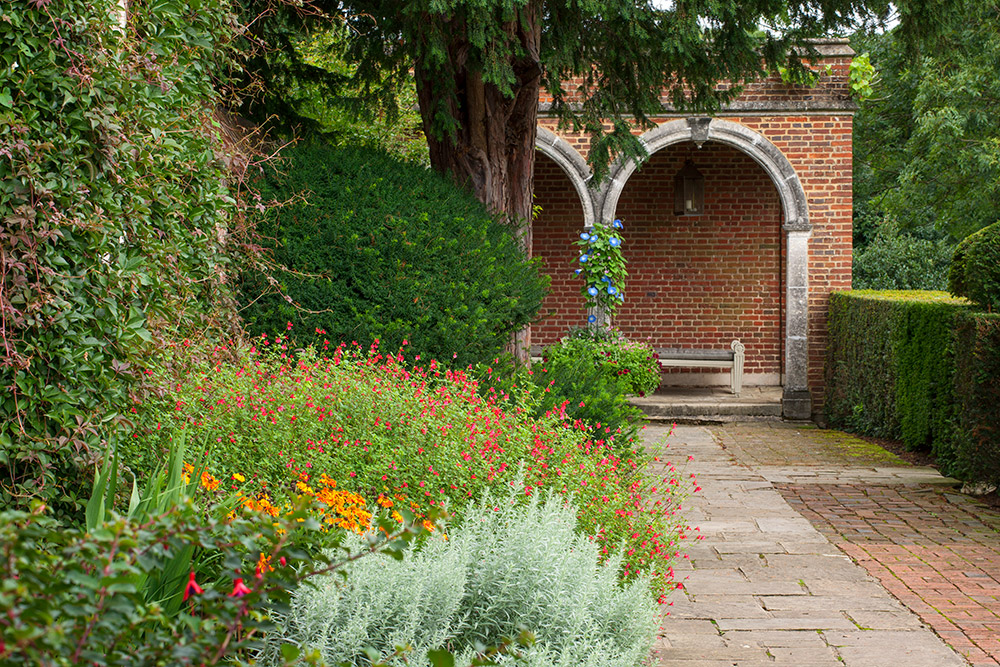
This is a hotel garden in Surrey. The seat is a kind of full stop to draw the viewer through. Again, it invites you to sit in the seat, so it’s adding visual interest. On an overcast day the light can be particularly flattering to borders. Bright sun would have killed the atmosphere. So overcast days can be handy – don’t assume you always need great sunlight.
Hedge your bets

Again, I am using shapes repeating from left to right here, which is another great framing tip. The clipped green obelisks arch away into the distance, which gives a three-dimensionality to the image. It was taken late in the afternoon in September, so the light is nice and crisp. So look for topiary gardens – they look amazing in the winter as well.
Mist opportunities

Sometimes, if you can get to the garden at dawn with a bit of mist and fog around it can look fantastic – so check out your weather apps. It’s like being in heaven, you get an adrenaline rush when you see light coming through mist like this. The colonnade/folly is slightly to the left while the overhanging branch adds interest on the left too.
Kit list
Tripod
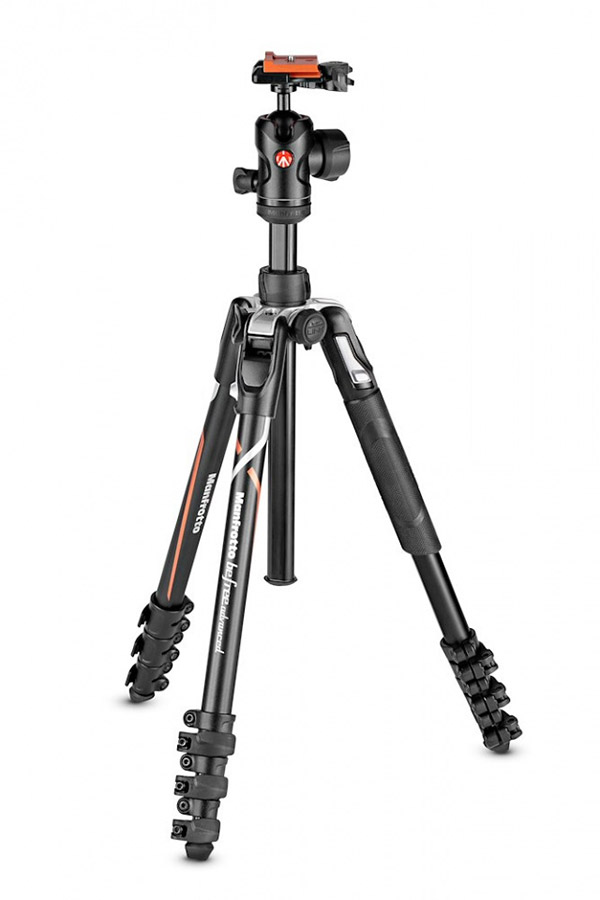
I like tripods that are very quick to set up, such as the Manfrotto BeFree – you often have to work quickly to capture the great light. Tripods help with long exposures and make you
more mindful of composition.
Zoom lenses
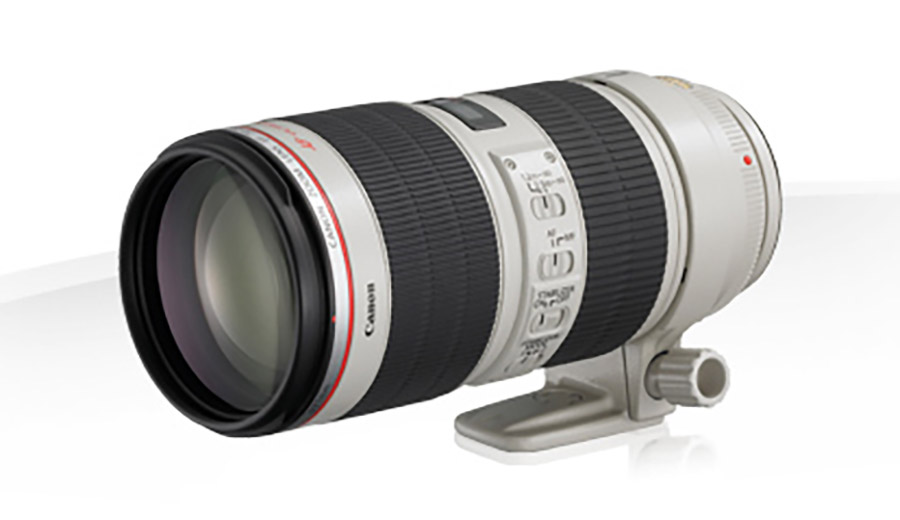
My favourite lenses are a Canon 70-200m zoom and a 24-70mm f/2.8. I don’t like going too wide as it disorts the image a bit too much. I might use a 17mm or 22mm, but I don’t like to foreshorten the perspective too much.
Canon DSLR
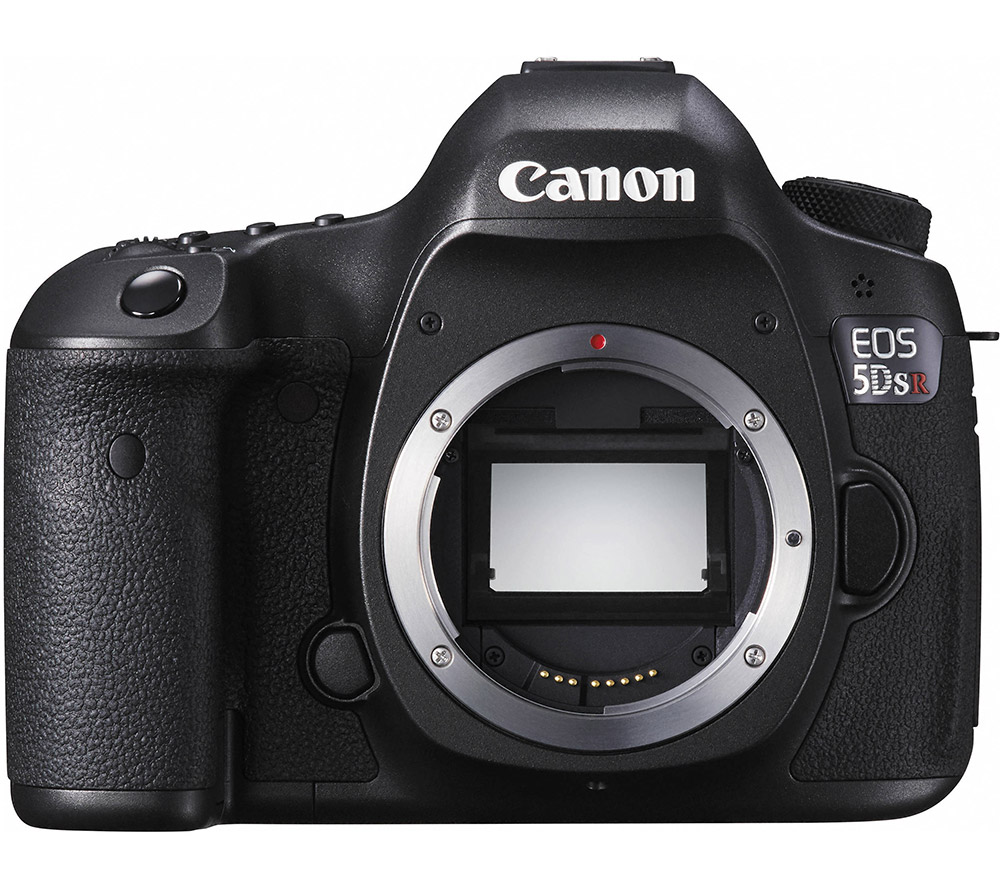
As well as the BBC Weather app – I prefer to shoot when it’s as still as possible – I swear by the Canon 5DSR. It’s the best camera I’ve ever owned, with 50.6MP on offer. It’s perfect for capturing complex garden scenes.
Jane Simmonds

Jane is an award-winning photographer inspired by her garden and the woods surrounding her home in the Forest of Dean. To see more of her work, www.janesimmonds.co.uk and Instagram: @janesimmonds31.
Spending time alone in nature has always been important to me – it gives me space to think and switch off from the world. Perhaps it was inevitable, then, that my photography would come to be mostly inspired by the flowers, plants and trees that I find all around me in my garden and local woodlands.
In my garden photography, I’m more interested in conveying an impression or emotion than I am in trying to record a faithful version of reality. I often use techniques such as ICM (Intentional Camera Movement) and multiple exposures to explore patterns, textures, shapes and colours. I also enjoy bringing my garden inside, creating images from botanical objects such as petals, seed pods and leaves.
Be playful
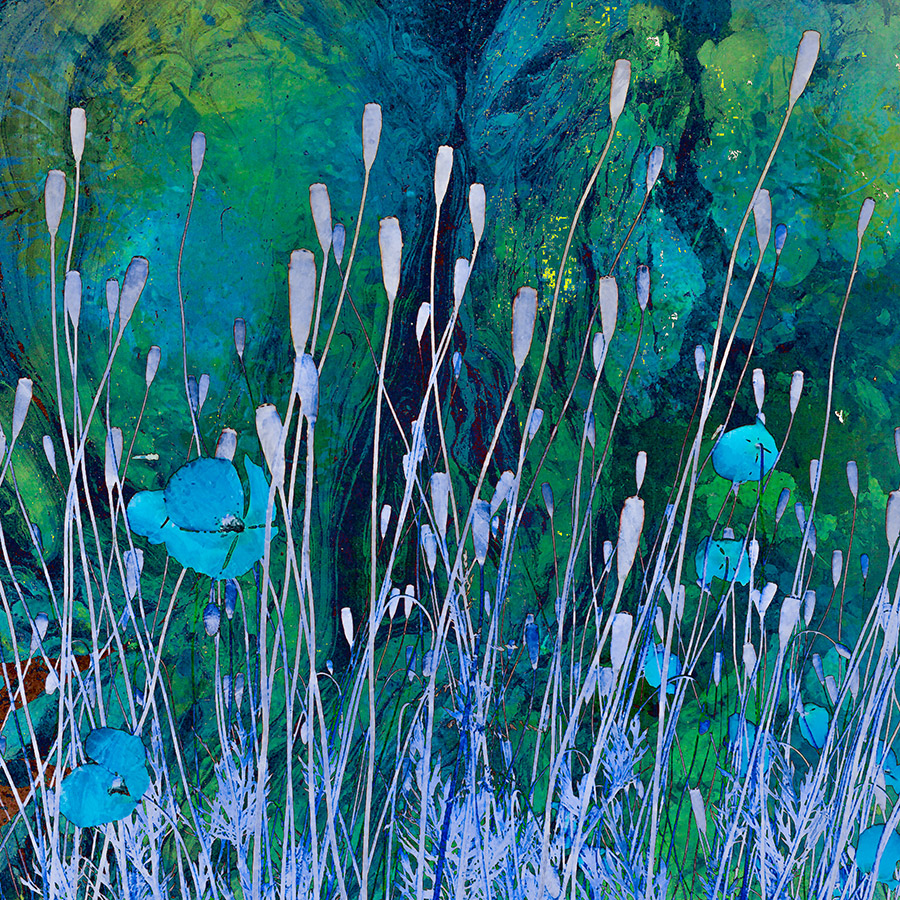
Playing with techniques like multiple exposures and ICM can be very liberating and bring another dimension to your garden photography. You don’t have to follow any rules, nor do you need an expensive camera with an in-built multiple exposure option – I use my phone and an inexpensive app to create many of my garden abstracts.
Get really close
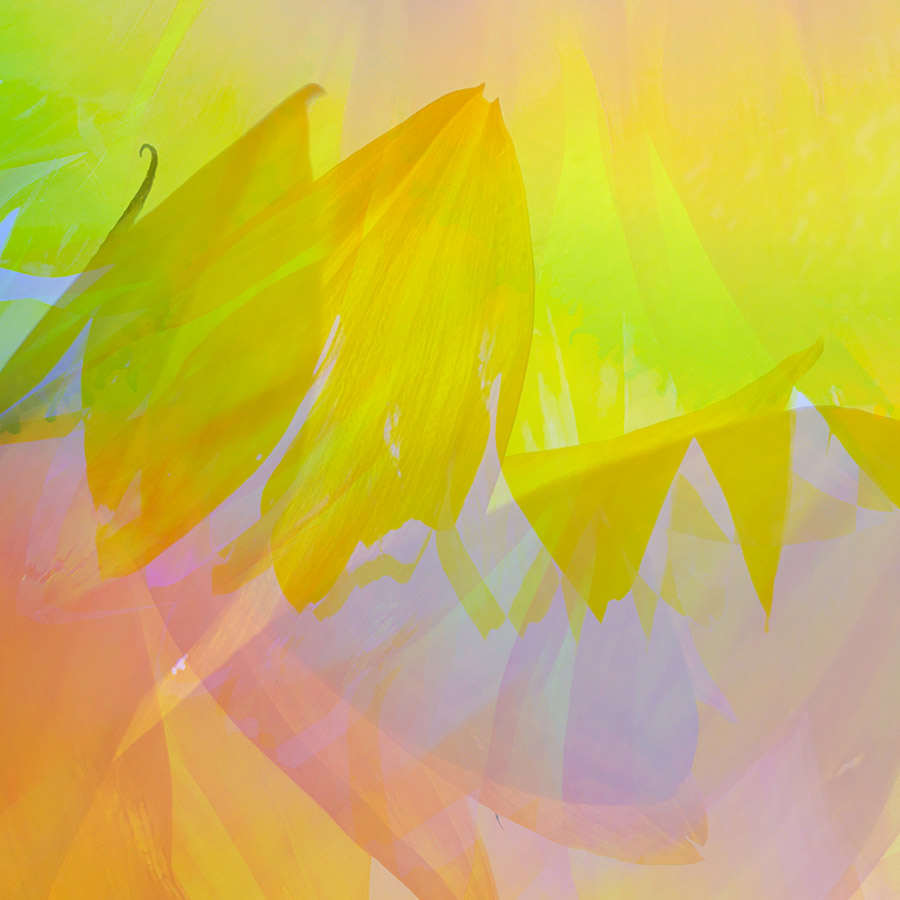
Try concentrating on a small detail of a flower head, looking for interesting lines, shapes or colour contrasts. You don’t need the whole flower to create an interesting garden abstract – sometimes less is more.
Try deconstructing
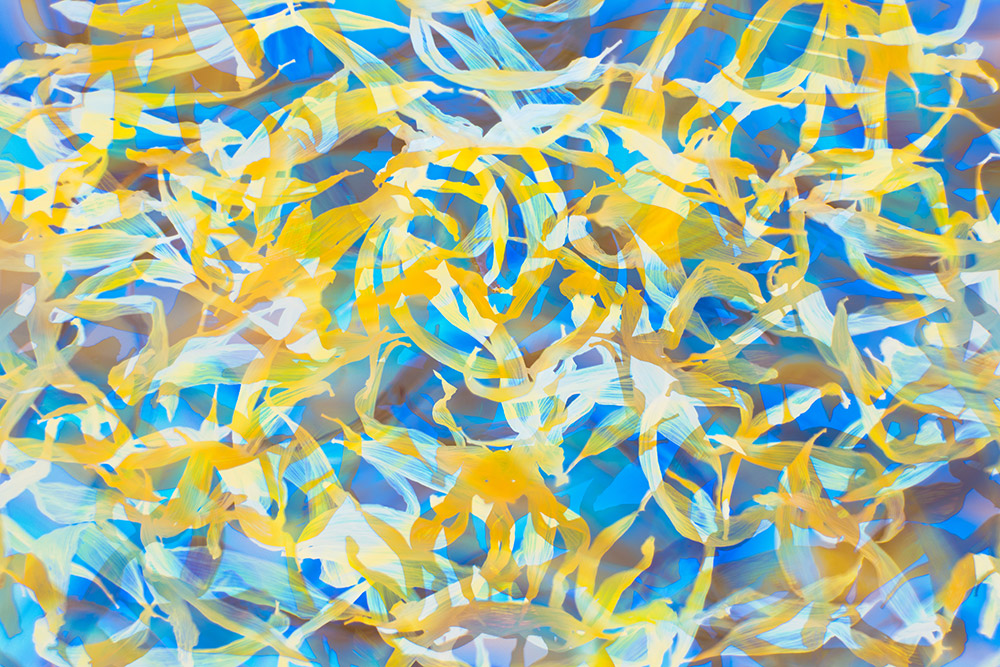
Just as restaurant chefs like to ‘deconstruct’ classic dishes to create something new, it can be interesting to ‘deconstruct’ a garden plant to create something that looks very different from the original. For example, I sometimes use petals to arrange patterns or shapes on a light pad and then experiment with multiple exposures.
Look beyond flowers
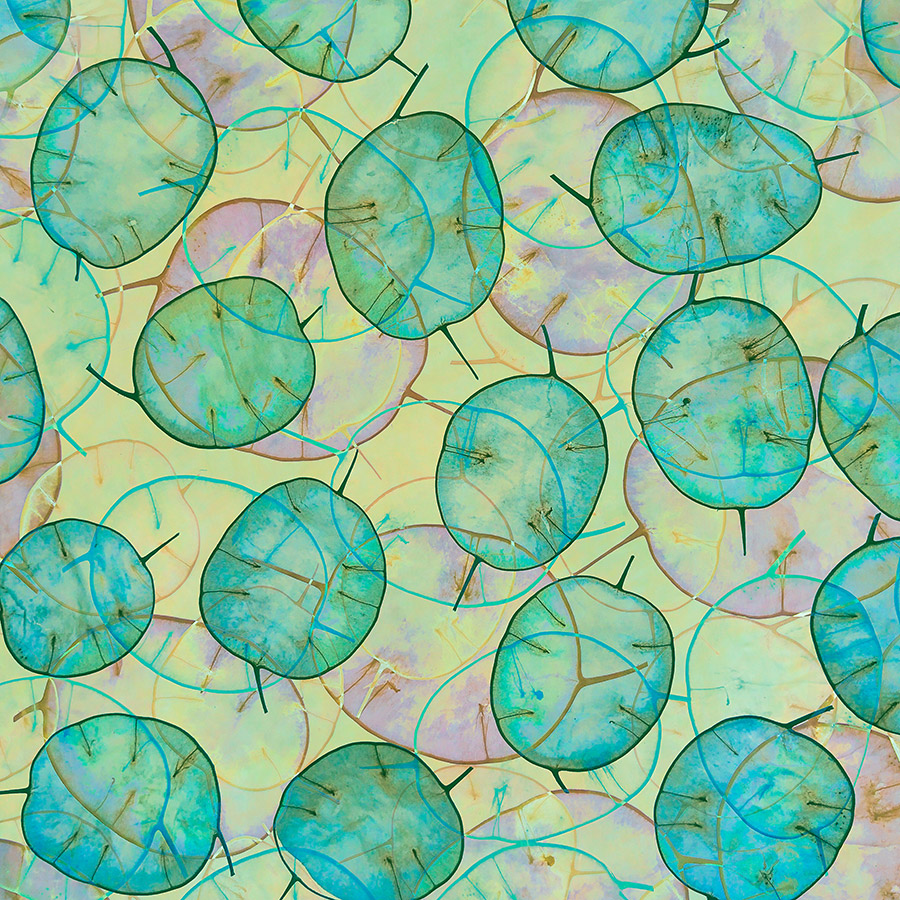
Don’t forget, there are many fascinating shapes and interesting details to be found in the garden throughout the four seasons such as seed heads and seed pods. I have planted Lunaria (Honesty) in my garden purely for the seed pods –although it does have lovely pink flowers too.
Plants with personality

I’m always drawn to flowers and plants that look like they have character rather than just existing simply to look beautiful. For example, I like the way that some flower heads can bend towards each other as if in conversation – in my imagination anyway!
Bold colours
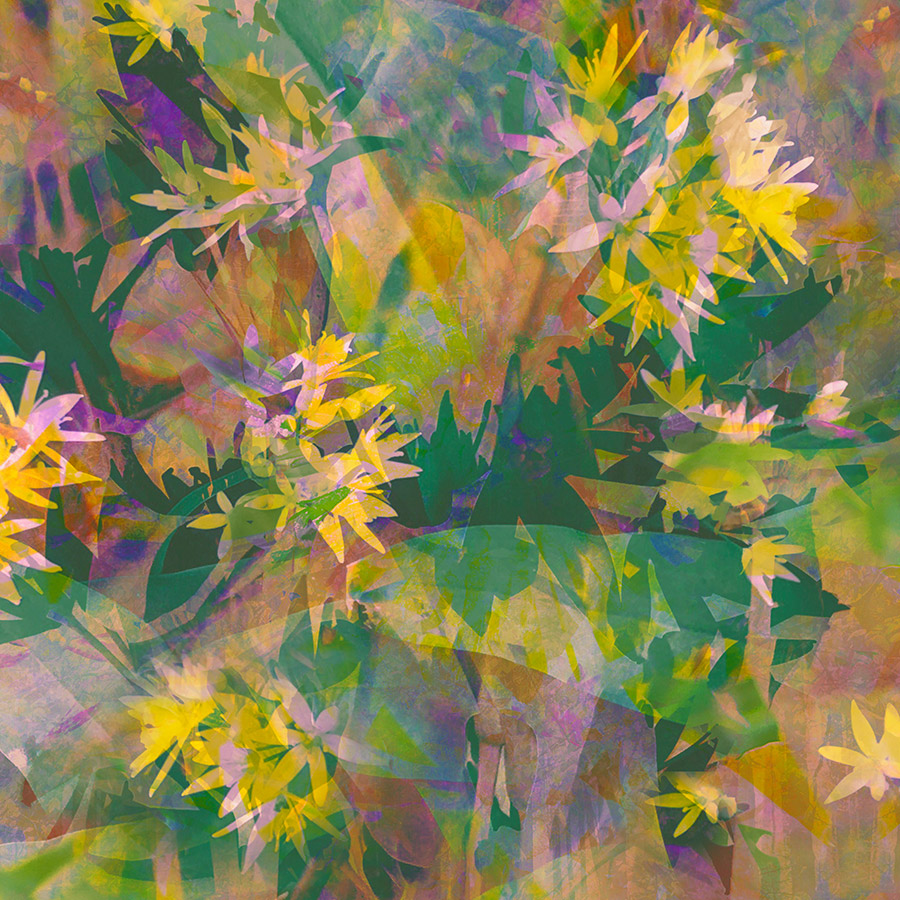
Soft, dreamy images of garden flowers and plants are undeniably beautiful, but it can be refreshing to experiment with strong colours and bold shapes for a different look – although it’s important to choose colours which sit harmoniously together.
Explore other genres
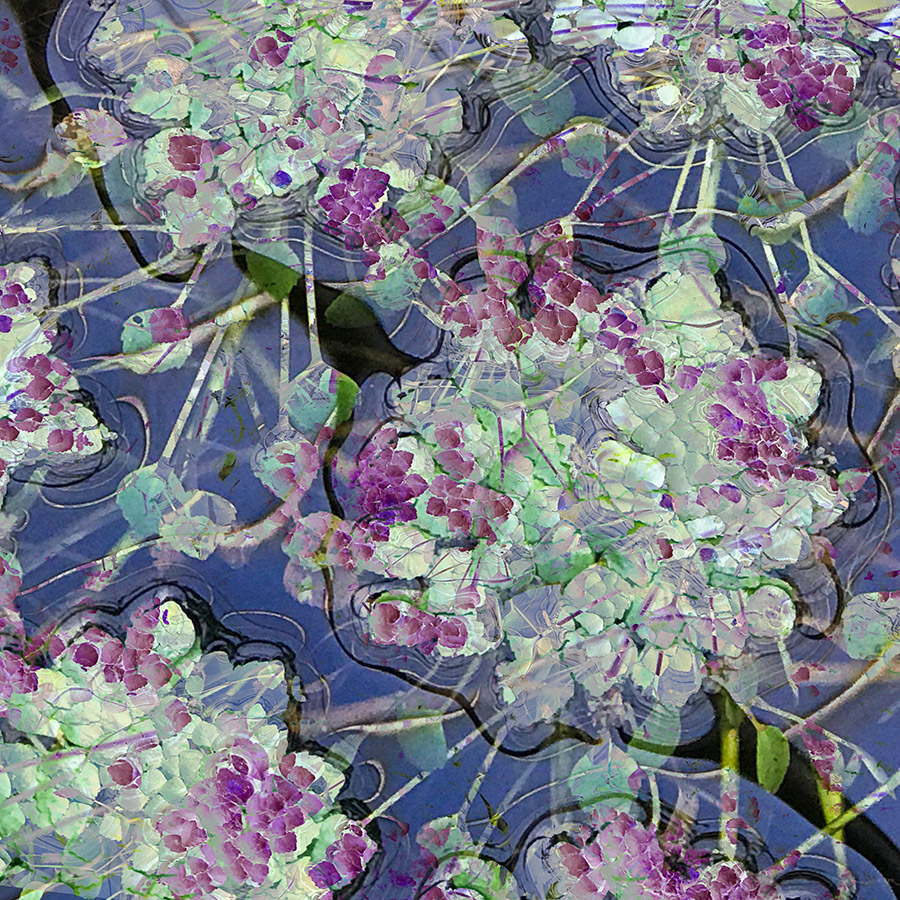
As well as getting inspiration from your own garden (if you have one), you can get a fresh perspective from visiting one of the many botanical gardens found in the UK. You’ll see unfamiliar plants and flowers and planting on a much bigger scale, all guaranteed to get your creative juices flowing. I’ve spent many hours at Royal Botanic Gardens, Kew, and can always find something new to photograph, whatever the time of year. (This image was made in the Water Lily House.)
Kit list
Apple iPhone

I use a fairly old Apple iPhone 7 Plus for many of my garden images – it has the advantage that it’s always with me if something sparks my interest. I also have a mirrorless camera and a small selection of lenses, but more often than not I find that my favourite images are made with my phone.
PhotoSplit app

I use this inexpensive app to create multiple exposures on my phone – it enables me to layer multiple images together using similar blending modes to those found in Photoshop. Sadly, the app is currently only available for iPhone not Android.
Pocket Smidge

I use this mini dispenser of insect repellent if I’m spending any time in the garden making images during spring/summer. It’s very effective and the dispenser slips easily into one of my pockets.
Tammy Marlar

Tammy’s colourful and creative garden images have done well in big competitions including International Garden Photographer of the Year. To see more, www.tammymarlar.com and Instagram: @tammymarlar
I’m a nature lover and I’ve been an environmental campaigner for most of my professional life. In recent years, however, photography has jumped off the back seat and seems to be dictating where I head next. One of the best things about nature photography is that it puts you in a mental state of searching for beauty – and this can be seen in the grandest of views or the smallest of details. One of my key aims is to tell the story of our beautiful planet in the hope it will inspire others to celebrate, preserve and protect it.
Check the weather
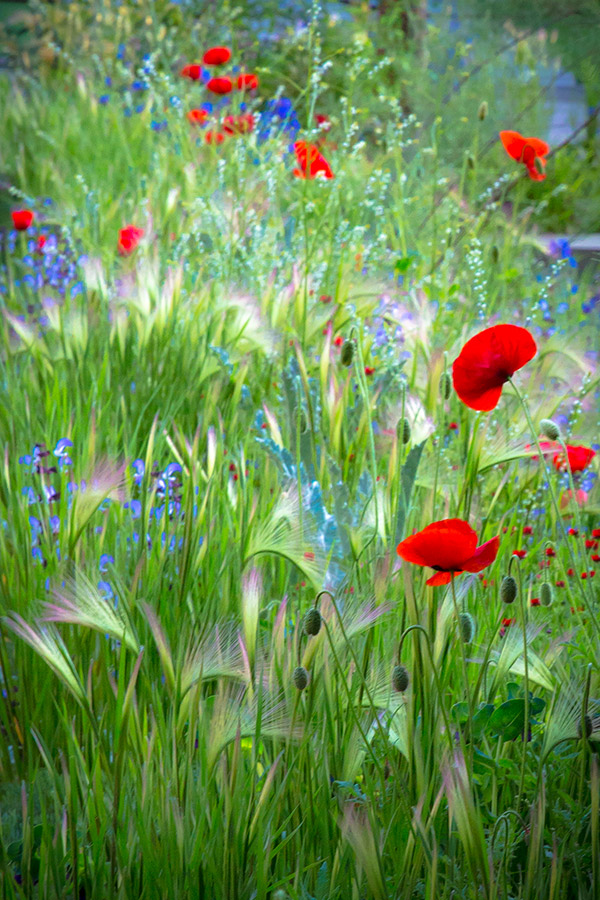
Check the weather forecast. Planning for a flower photography shoot starts with the weather. Watch the forecast for a few days before you head out and consult a couple of different sources. Wind is rarely your friend, although modern sensors can cope with higher ISO values and you can make a feature of it if you wish, by emphasising movement.
Be familiar
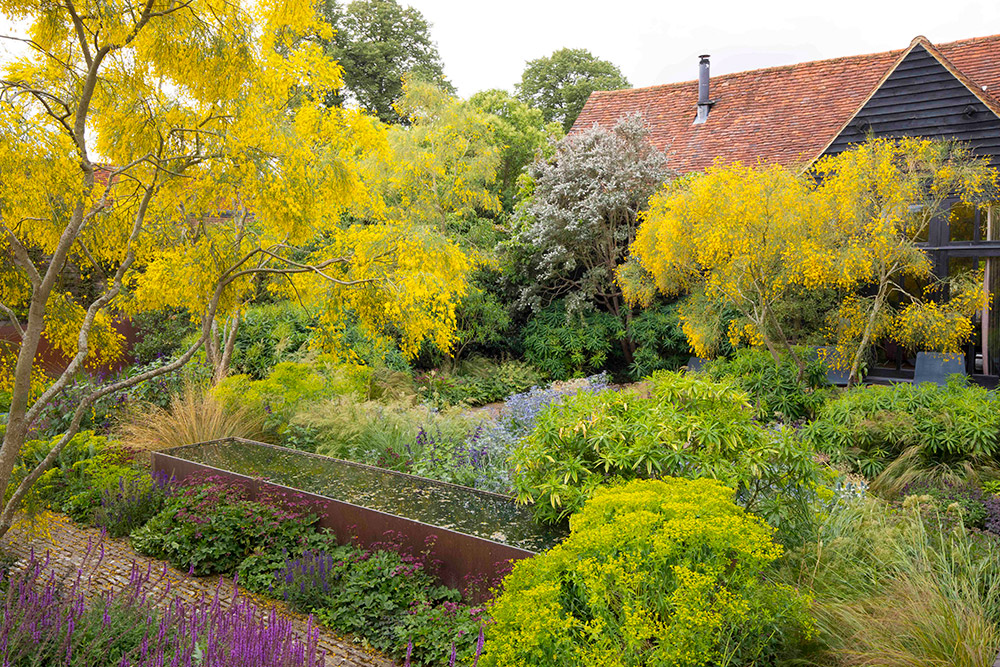
Make yourself familiar with the garden. Get to know it well and let it reveal itself. Notice where the sun rises and where it sets. This may take a few visits, at different times of day and in different seasons, but the more you know a garden, the better your pictures will be.
Light savvy

Choose the right time of day. Light creates drama, depth, atmosphere, shape, texture, form and brings colour to life. The early morning and late afternoon will give you soft light that’s more complementary than the harsh sun of midday, which will create deep shadows that interfere with shape and colour. Early morning is a special time with its stillness and quality of light. Also, take advantage of overcast conditions to give you soft, diffused light – perfect for flower portraiture.
Colour it up
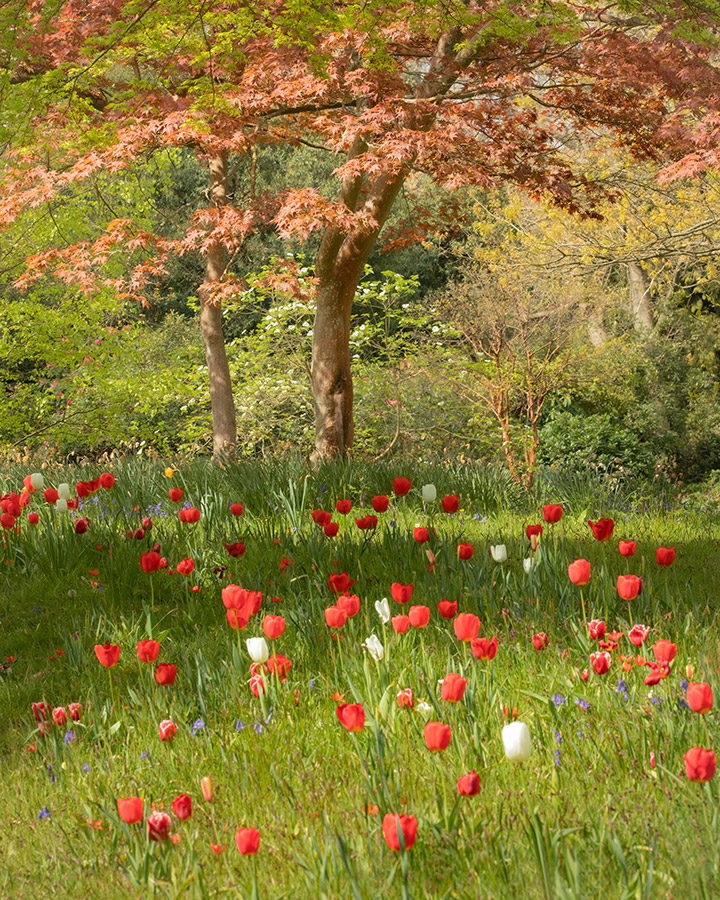
Learn how to use colour. A colour wheel gives a visual reference guide for using colour. Segments of colour which lie opposite one another are considered complementary, whilst segments that lie next to each other are harmonious. Take the time to notice relationships between colours because this will enhance your images. A skilful gardener has a heightened awareness of how colour works in a garden and it’s one of the main responsibilities of a garden photographer to respond to this heightened sensitivity.
A year-long endeavour

Shoot all year long. Don’t be fooled into thinking that winter is a downtime for garden photographers. Shooting during late autumn and winter can yield incredible results because of the quality of the light. Winter light brings out the visual play between highlights and shadow, as well as cool and warm tones.
Background
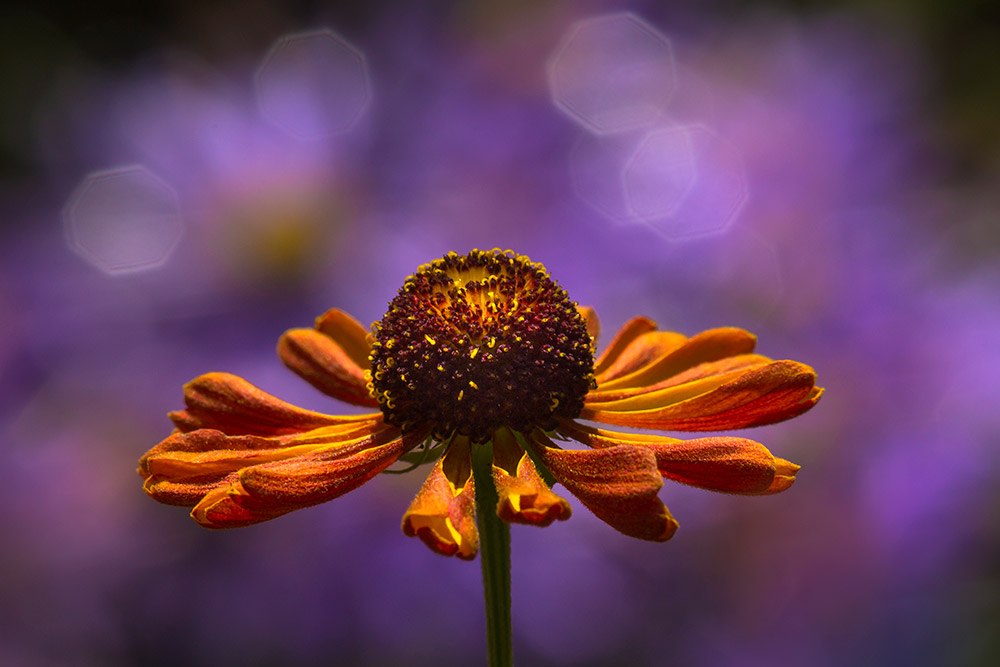
Recognise the importance of backgrounds. Think carefully about the backgrounds you use for your flower portraits. Make the flower the predominant subject. Flowers are beautiful and intricate, and our images should accentuate their allure and detail as much as possible. We’ve all seen images of flowers, birds or insects with cluttered or ugly backgrounds. The main subject gets lost in the melee and the picture doesn’t work. Compose the image in a way that keeps the flower the predominant focus by avoiding things that will be distracting.
In the bag
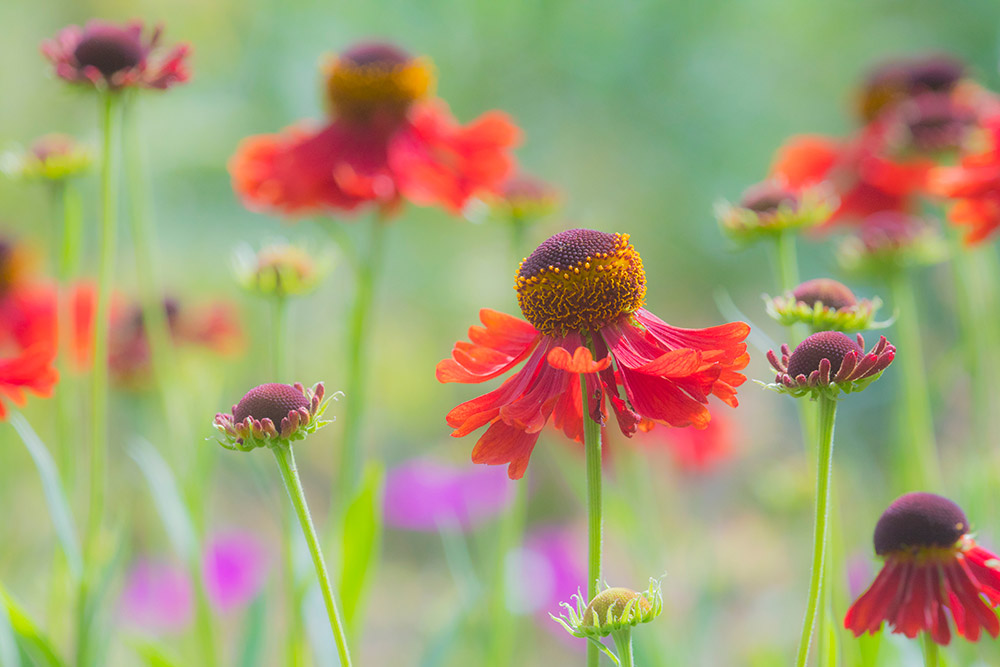
Pack a comprehensive kitbag. Wideangle, macro and telephoto lenses may all be necessary. Take and use a tripod, ideally one that can go low. In winter, the most important item after camera, batteries and lenses, are gloves and hand-warmers! Other non-photographic kit may include card backdrops, a kneeling-pad, as well as nail scissors, freezer ties and clothes pegs to help you manage stray stems.
Kit list
Macro lens
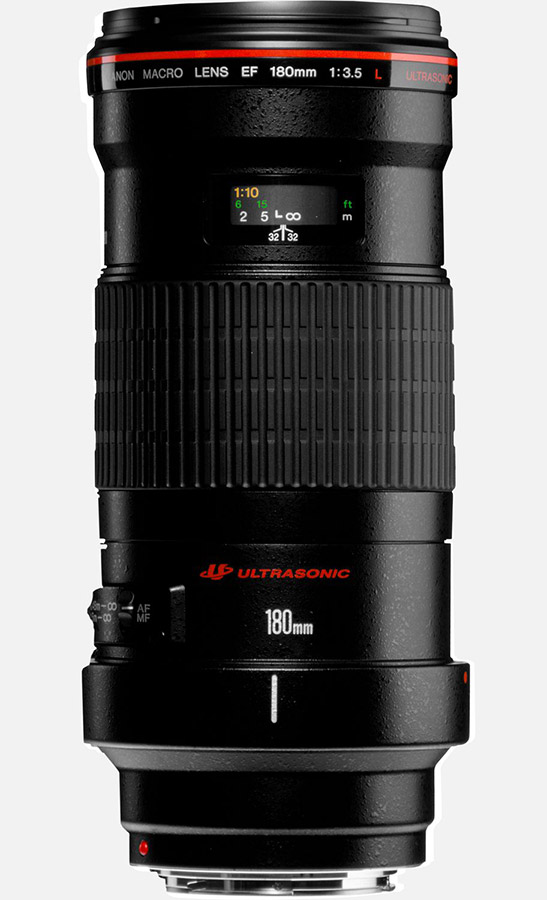
Small details can really matter in this genre. When I’m isolating individual flowers, I often use a Canon EF 180mm f/3.5L Macro USM lens. This lens offers true life-size (1:1) reproduction and is super-sharp from 1.0x to infinity.
Good gloves

Gardening gloves are available in a variety of materials. However, when you’re photographing in cold conditions the Zeltauto Men’s Thinsulate Fingerless Gloves are ideal. These convertible fingerless mittens keep your digits super cosy.
Clothes pegs

Whether you’re holding a plant still, keeping unsightly foliage out of the way or suspending a backdrop behind a plant, clothes pegs are a great addition to a garden photographer’s kit bag.
Further reading:
How to capture garden birds in flight – Amateur Photographer
Glorious gardens – Amateur Photographer
Top tips for taking photos in your garden – Amateur Photographer

